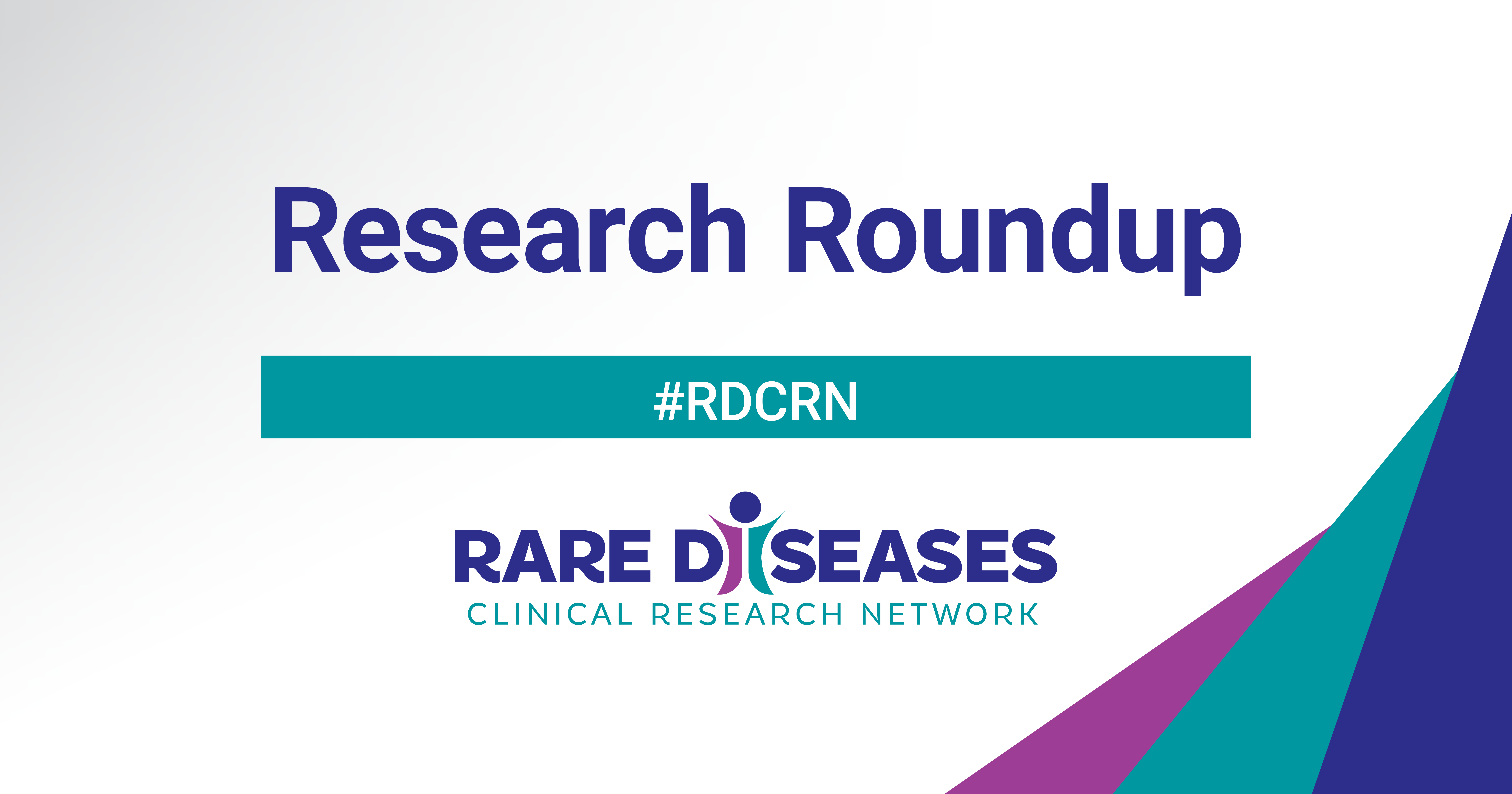Each month, we share summaries of recent Rare Diseases Clinical Research Network (RDCRN) grant-funded publications. Catch up on the latest RDCRN research below.
Jump to:
- Clinical Research in ALS and Related Disorders for Therapeutic Development (CReATe)
- Frontiers in Congenital Disorders of Glycosylation (FCDGC)
- Global Leukodystrophy Initiative Clinical Trials Network (GLIA-CTN)
- Lysosomal Disease Network (LDN)
- North American Mitochondrial Disease Consortium (NAMDC)
Clinical Research in ALS and Related Disorders for Therapeutic Development (CReATe)
Investigating Serum Neurofilament Light Chain as a Biomarker in Hereditary Spastic Paraplegia Type 4
Hereditary spastic paraplegia (HSP) is a group of inherited neurological disorders characterized by muscle weakness and tightness (spasticity) in the legs. Easily accessible fluid biomarkers are lacking in spastic paraplegia type 4 (SPG4), the most prevalent form of HSP.
In this study, researchers investigated serum neurofilament light chain (sNfL) as a potential therapy response, diagnostic, monitoring, and prognostic biomarker in SPG4. The team assessed sNfL levels in 93 patients with SPG4 and 60 healthy controls. They found that sNfL levels are not suitable to monitor disease progression in SPG4, but may be valuable as a therapy response biomarker.
Authors note that because sNfL levels appear to be most dynamic around the onset of SPG4, the ability to detect a therapy response is especially promising in younger patients, matching the need to initiate treatment in early disease stages.
Frontiers in Congenital Disorders of Glycosylation (FCDGC)
Experts Explore Consensus on Identification of Congenital Disorders of Glycosylation
In this letter to the editor, an expert team of authors explores a consensus on which genetic conditions should be identified as congenital disorders of glycosylation (CDG).
“They are aiming to be inclusive; CDG should be used as the correct nomenclature in any disorders where the synthesis of glycans, glycoproteins, or glycolipids—including oligosaccharide transfer, glycan maturation, or trafficking—is affected,” says Eva Morava-Kozicz, MD, PhD, principal investigator of the Frontiers in Congenital Disorders of Glycosylation Consortium (FCDGC). “This is demonstrated by abnormal glycosylation in functional studies and should be called a CDG.”
Global Leukodystrophy Initiative Clinical Trials Network (GLIA-CTN)
Determining Average Time to Transplant in X-Linked Adrenoleukodystrophy
Cerebral X-linked adrenoleukodystrophy (cALD) is a disorder characterized by the destruction of myelin (the insulation surrounding nerve fibers) in the brain. Survival and improved outcomes for cALD are associated with hematopoietic stem cell transplantation (HSCT) at earliest evidence of disease on magnetic resonance imaging (MRI).
In this study, researchers aimed to determine average duration between diagnosis of cALD and HSCT. Among 27 patients with cALD in the hospitals they evaluated, the team found that time to HSCT was greater than 3 months. They also noted differences in average time by race/ethnicity and by hospital. Authors state that these findings suggest an opportunity to reduce time to transplant in cALD.
Lysosomal Disease Network (LDN)
New Scale Quantifies Physical Symptoms of Mucopolysaccharidosis in Infants and Toddlers
Mucopolysaccharidosis (MPS) is a group of inherited conditions in which the body is unable to properly break down mucopolysaccharides (long chains of sugar molecules that are found throughout the body). As a result, these sugars build up in cells, blood, and connective tissue, leading to a variety of health problems. A physical symptom score (PSS) has been developed to characterize physical symptoms of MPS in older children. With the onset of newborn screening, there is an increased need to characterize these symptoms in infants and toddlers.
In this study, researchers aimed to create a measure to quantify somatic (physical) burden in patients with MPS under 36 months of age. They established the Infant Physical Symptom Score (IPSS) using data from 39 patients with Hurler syndrome (MPS IH) enrolled in a Lysosomal Disease Network (LDN) study. To validate the new scale, researchers compared the IPSS with the PSS.
Results show that the IPSS is a useful approach to quantifying the somatic disease burden of MPS IH patients under 36 months of age. Authors note that the IPSS may also provide a predictor of later outcomes, especially adaptive function.
North American Mitochondrial Disease Consortium (NAMDC)
Investigating Disease-Causing Missense Variants in Pyruvate Dehydrogenase Complex Deficiency
Pyruvate dehydrogenase complex (PDC) deficiency is a type of metabolic disease that is a major cause of primary lactic acidemia, a disorder characterized by increased lactic acid levels in the blood and cerebrospinal fluid. This disorder results in high morbidity and mortality, with limited therapeutic options.
E1 is among one of four main components of the mitochondrial multienzyme PDC. E1 is composed of E1α and E1β protein subunits encoded by the PDHA1 and PDHB genes, respectively. Mutations of the PDHA1 gene are responsible for greater than 82% of cases with PDC deficiency.
In this study, researchers investigated the impact of E1α and E1β residues with disease-causing missense variants (DMVs) on the structure and function of E1 and the significance of certain subunit-subunit interface contact alterations to disease pathogenesis. Authors state that this work provides insight for future target-based advanced molecular modeling studies, with implications for development of novel therapeutics for specific recurrent DMVs of E1α.
The Rare Diseases Clinical Research Network (RDCRN) is funded by the National Institutes of Health (NIH) and led by the National Center for Advancing Translational Sciences (NCATS) through its Division of Rare Diseases Research Innovation (DRDRI). Now in its fourth five-year funding cycle, RDCRN is a partnership with funding and programmatic support provided by Institutes, Centers, and Offices across NIH, including the National Institute of Neurological Disorders and Stroke, the National Institute of Allergy and Infectious Diseases, the National Institute of Diabetes and Digestive and Kidney Diseases, the Eunice Kennedy Shriver National Institute of Child Health and Human Development, the National Institute of Arthritis and Musculoskeletal and Skin Diseases, the National Heart, Lung, and Blood Institute, the National Institute of Dental and Craniofacial Research, the National Institute of Mental Health, and the Office of Dietary Supplements.


